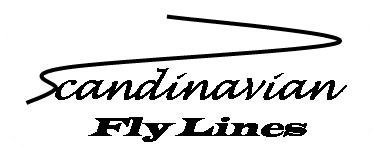Customise your fly line
Customise your Scandinavian Fly line.
MTD – Scandinavian Shooting heads for double handed fly rods
If you are not a reasonably competent Spey caster, we recommend that you learn the basics from an instructor or a competent friend. We also suggest that you use a carbon fibre rod of 12 to 16 feet with a progressive action.
Which fly line should I choose ?
We suggest you choose a line in accordance with the recommendation on your rod. This is expressed as an AFTM number or in grams. Recommendations in grams are more accurate and reliable for use with shooting heads.
Some general recommendations regarding the weight of your shooting head
This table will provide you with a starting point:
12.5 ft #8/9 rod: 28-31 grams
13 ft #8/9 rod: 31-34 grams
13 ft 9/10 rod: 33-36 grams
14 ft #9/10 rod: 37-40 grams
15 ft # 10/11 rod: 41-43 grams
With floating lines we suggest you follow the upper recommendation: eg. If the recommendation from the table above is 33-36 grams for your rod, choose 35 grams for a floating head. With sinking lines choose the lower recommendation: 33 grams. This will give you a good idea of the weight of head that will suit your rod, but achieving a perfect balance will depend on your rod and your casting technique.
Should you have any further problems please do not hesitate to contact us.
Before you start casting
Have your fly reel loaded with monofil or dacron core running line. Knot the reel end of your shooting head to the running line in the manner described above in the advice given for single handed rods. Remember to use a leader which is a least the length of the rod. Finally, we recommend that you test your line on running water, and try casting from the bank and while wading to ensure that the line suits all conditions you are likely to encounter.
Testing on the river
Try to cast controlled, narrow loops without shooting any line. Remember to use an “overhang” – half a meter / 18 inches of running line outside your tip ring. Initially your shooting head will probably be too long and too heavy. To get the balance right cut no more than 15 – 30 cm / 6 – 12 inches off the rear end of the head (never the front end) and cast again. When you have reduced the length of the head to the point where the balance feels right, start shooting line and continue testing you line to make sure that it works well in all fishing situations.
How do I know that my fly line is too long/heavy?
If you have a long line in front of you when the fly line is on the surface and you are starting your forward cast, the line is too long. Reduce the length.
If you have a long line behind you when you are starting your forward cast, the line is too long. This kind of cast is similar to the classical Spey cast, when you need to control a longer line behind you. The Scandinavian Spey cast requires no/very little space behind you.
If you are performing a good forward cast, but the line and the leader do not end up being in a straight line on the water. Instead the line sinks towards the surface during the forward cast. If this happens, the line could be too heavy. Reduce the length.
How do I know that my fly line is too short/light?
If the line do not load the rod by its own weight, the line is too light. The result is a common casting error: you try “too much” to cast the line. It is the rod that should load and cast the line, not by using too much movement with your arms, shoulders or upper body. If you experience this, use a heavier line.
What is the right length and weight of your fly line?
The fly line has to feel easy to cast both at distance and at angled Spey casts. It is important that the line load the rod with a minimum of casting effort. The normal length of the line is between 10-13 meter, depending on your rod, individual casting style and fishing conditions. When you have determined the right length for your shooting head, connect the shooting head and running line together permanent. To do this, use loop connectors in both ends. Or use a special technique, which means that you sew and glue the dacron of both fly lines together. If you have questions about this special technique, please contact us for further instructions.
If you really want to find a fly line that suits you and your preferences, our “Custom”-lines are the models you are looking for. We have published more info about these line here:
